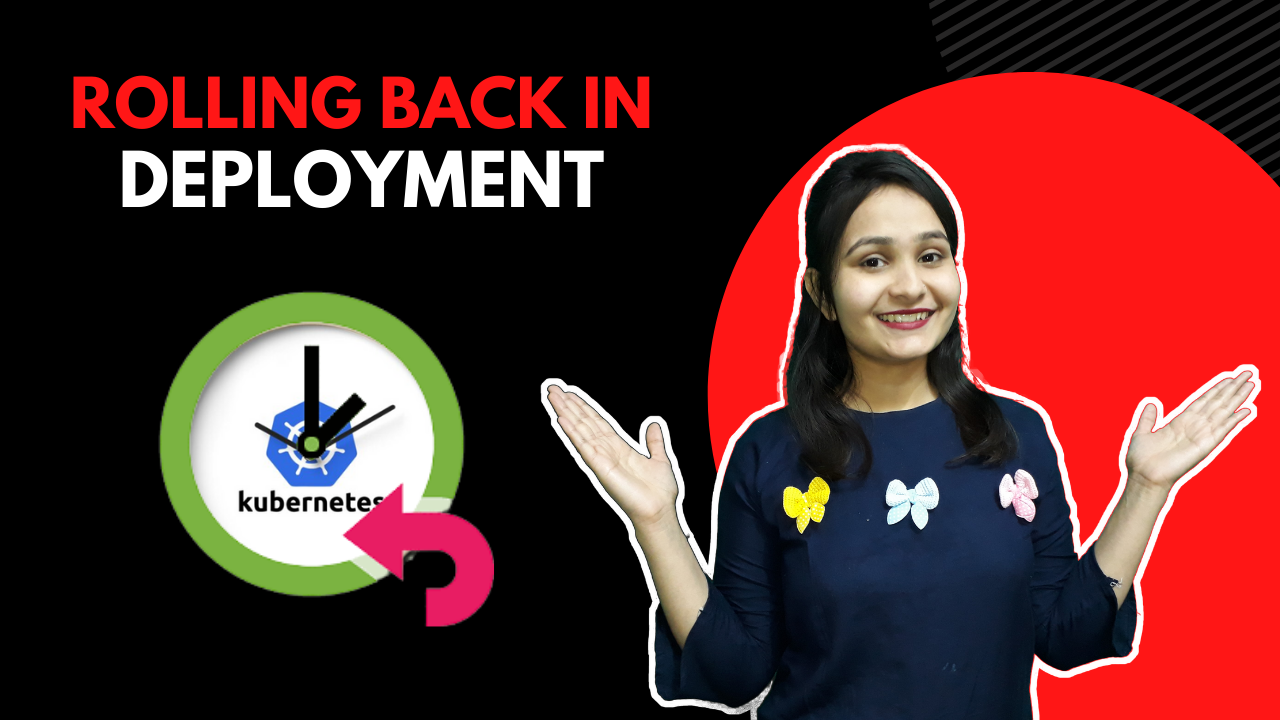In real life, if we make a mistake and if we want to rectify it, then we cannot go back in time and we cannot correct it. But in the world of Kubernetes, we can do this magic🪄. Don’t you want to know how such magic can be done🤔? Let’s move closer to this magic and know it better. In this article, we are going to understand a very magical concept(Rolling back In Deployment) through a story, so stay with me till the end.
Meet harry, he is a DevOps engineer🧑🎓 and works in an ABC private limited and his boss has given him the task of deploying the Nginx web server which is a basic requirement of the software on which the company is working. He ran the below command to deploy the Nginx server whose configuration is written in the nginx-deployment.yaml file.
kubectl apply -f nginx-deployment.yaml --record=trueBy running the above command, A deployment has been created with the name nginx-deployment, image nginx:1.14.2, and with 3 replicas. We can check the same by running –
kubectl get deploymentNAME READY UP-TO-DATE AVAILABLE AGE
nginx-deployment 3/3 3 3 1sSo this is how Harry successfully created his first deployment. 🥳
After some time, Harry was asked to upgrade the image of the same deployment from nginx:1.14.2 to nginx:1.16.1. By using the below command, he updated the deployment’s image.
kubectl set image deployment/nginx-deployment nginx=nginx:1.16.1 --record=truedeployment.apps/nginx-deployment image updatedTo see the rollout status, run:-
kubectl rollout status deployment/nginx-deploymentAfter some time again he was asked to upgrade the image from image nginx:1.16.1 to nginx:1.21.6.
kubectl set image deployment/nginx-deployment nginx=nginx:1.21.6 --record=trueAs soon as the image was updated, the software stopped running due to the incompatibility of the software with the image nginx=nginx:1.21.6 and no one was able to access that software. Harry got a little scared😰 and wondered what could happen so that he could get back the software running with the previous image.
Then after a lot of research, he came to know about the rolling back in deployment, and by using that approach he solved his problem. Let’s see what is the rolling back in deployment and how it works.
Whenever we make changes in the created deployment, the rollout is triggered and assigns a number to that change, that number is called the revision number.
Note – The rollout is triggered whenever the deployment is updated but only if the Deployment’s pod template (that is, .spec.template) is changed, for example, if the labels or container images of the template are updated. Other updates, such as scaling the Deployment, do not trigger a rollout.
So that means the rollout started when Harry updated the image, and that change got assigned a revision number.
To check the revisions of this Deployment:
kubectl rollout history deployment/nginx-deploymentdeployments "nginx-deployment"
REVISION CHANGE-CAUSE
1 kubectl apply -f nginx-deployment.yaml --record=true
2 kubectl set image deployment/nginx-deployment nginx=nginx:1.16.1 --record=true
3 kubectl set image deployment/nginx-deployment nginx=nginx:1.21.6 --record=trueThese revision numbers represent the versions of a deployment. To see the details of each revision, run:
kubectl rollout history deployment/nginx-deployment --revision=2Rolling Back to Previous Revision
Harry has decided to undo the current rollout and rollback to the previous stable revision:
kubectl rollout undo deployment/nginx-deploymentBy running the above command, he has reached the last deployment version running nginx:1.16.1 image. But what if he wanted to rollback directly from nginx:1.21.6 to nginx:1.14.2? This is called rollback to a specific revision number, this can be achieved by specifying –to-revision: with the below command –
kubectl rollout undo deployment/nginx-deployment --to-revision=1deployment.apps/nginx-deployment rolled backThe Deployment is now rolled back to a previous stable revision. We can see this by describing the deployment –
kubectl describe deployment nginx-deploymentThis is how Harry went back in time⏱ and run his compatible nginx:1.16.1 server by using the concept of rolling back in deployment. This magical concept is known as Rollback In Deployment. Now you also know how this magic works, go and try it by yourself. I hope reading this article was worthful for you. Thank You💛
Check out my other blogs to continue learning.

